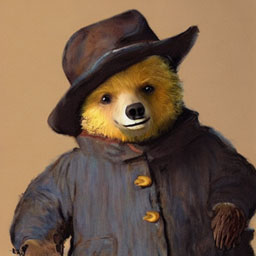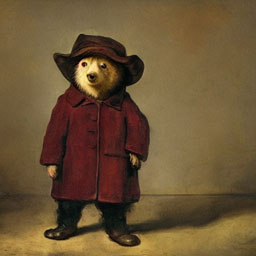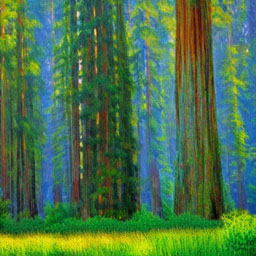August 31, 2022
The Brave New World of Artificial Intelligence and
Its Impact on Truth and the Arts

Paddington Bear Portrait by Rembrandt (Created with Stable Diffusion)
I recently listening to a radio program (KQED’s Forum, on August 26; DALL•E, Deepfakes and the New Frontier of Online Misinformation) that interviewed a UC Berkeley professor named Hany Farid. It was so alarming that I changed what I had planned to include in this newsletter to tell you about it.
Professor Farid was updating the listeners on the current state of computer artificial intelligence (AI) to create deepfakes – fake images (especially of celebrities and notables) that are so good, people are having a hard time telling if they are real or not.
Prof. Farid states,
“We tend to think of disruption of technology impacting manual labor… but now we’re talking about AI disrupting creative tasks…it’s not just creative, doctors, radiologist, AI systems are getting so good now… I don’t think you can stop this. So it’s a question of how do we come to grips with this massive disruption on the scale of the industrial revolution.”
When I heard that radio program, I began to wondering about the current state of AI being used in other fields such as writing. I recalled hearing about scientist using AI to create music compositions that sounded like it was composed by some famous composers and I seemed to recall hearing about how they were also using AI to write in the style of great writers. What I just read about the advances in AI writing in this one article, 5 Reasons Why AI Is a Threat to Writers, is equally alarming.
In Alberto Romero’s article about AI and writing, he states,
“AI will impact the writing industry, that’s true. But it’ll also impact virtually every other industry. Current reports estimate that around 40–50% of all jobs could be replaced in 15–20 years. The day in which computers can replace many of our jobs is at hand.”
Prof. Farid and another guest on the KQED Forum program, policy researcher for OpenAI, Lama Ahmad, described a program called DALL•E (and the newer improved version DALL•E 2). DALL•E is a program that generates images from text people input into it.
People familiar with the Star Trek Next Generation TV series may think of this as something akin to a “Holodeck.” The characters of this series were able to tell the computer to create real holographic worlds using verbal instructions. DALL•E’s communication interface is not as sophisticated yet and what it’s producing is not three dimensional, but what it is doing is just the tip of the iceberg of what AI will soon be doing for many creative jobs.
We’re not talking about what a skilled human can do with graphic image programs like Photoshop. DALL•E is also capable of creating real art merely by someone directing it with words like “Redwood trees in the style of Monet” or “Paddington bear painted by Rembrandt.” At the top and end of this article are the images I created using a free, less sophisticated, program called “Stable Diffusion.”
Alberto Romero’s article states that AI can write virtually anything –essays, poetry, songs, jokes, copy text, and even program code. Yes, AI can even write its own programs. In 2016, an AI wrote a novel for the Hoshi Shinichi Literary Award and nearly won. That was before the creation of an open source AI writing tool called GPT-3 (back in May 2020).
Admittedly, these tools could be seen as fun and or useful tools for us less skilled artists and writers, but the potential for abuse (as it pertains to deepfakes) and disruption to the arts professions is immense. Can you imagine a day when books and movies are generated nearly completely by programs? The film industry is so used to using cookie cutter plots it’s even more conceivable that an AI produced film is coming to a theater soon. And who would know the difference?
The dangers of deepfakes has been covered by the media. But Prof. Farid brought up another interesting concept called “the liar’s dividend.” This is when liars can benefit when the truth is being obfuscated. Liars would merely need to tell followers that truths and facts unbeneficial about them or their stance is fake. So the problems with deepfakes cut both ways. It not only can create believable falsehoods, but can also sow seeds of doubt about the truth.
Prof. Farid goes on to say,
“If we enter this world where any image, any audio, any video, any tweet, any article can be fake, well then nothing has to be real. We can simply dismiss things that we don’t like or agree with and now we are living in completely different universes relative to those around us… And now that is what you are seeing – police violence, fake; human rights violations, fake; politicians say something inappropriate, fake. Your followers believe it, nobody else does and now we are living in alternate realities… And now we have a double fisted weapon. I can create fake content and I can deny reality… using exactly the same specter of that technology. And that, living in alternate universes, I don’t know how we move forward with democracy or society for that matter.”
Furthermore Farid states,
“For the last ten, fifteen years, we’ve all been living in social media world. And Social media world has done a very good job of taking that inherent confirmation bias and jacking it up, because the way we interact with social media… is that algorithms decide what we see, hear, read, and eventually believe. And these algorithms are distorting our world view. Your newsfeed… it is based on one thing, and primarily one thing only which is deliver content to maximize user engagement and the delivery of ads. And so our world, for years now, has been heavily distorted through these algorithms that are trying to drive user engagement and therefore profit. And if you haven’t done so already, you should delete… social media because it is bad for you…
The reality today is, ‘The cat is out of the bag.’ We’re not putting this technology back. So we’re going to have to deal with it one way or another. As much as I would like to change the world, by just unplugging the Internet some days, it’s not going to happen. And we’re going to have to start to get more serious about dealing and mitigating with the harms that are coming from these types of technologies.”
In Alberto Romero’s article about AI and writing, he concludes with this statement, “Simply keep it in mind and learn to create strategies to put yourself in the best position possible for the years to come.”
This article and newsletter was not written by AI. Yet!

Paddington Bear Painted by Rembrandt (Created using Stable Diffusion)

Redwood Trees in the Style of Monet (Created using Stable Diffusion)
The copyright for Paddington Bear and the quotes used in this article are not owned by AACP.
They are being used for nonprofit educational puposes.
****
Copyright © 2022 by AACP, Inc.